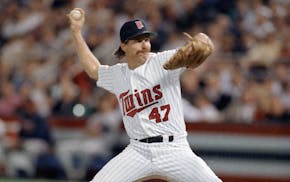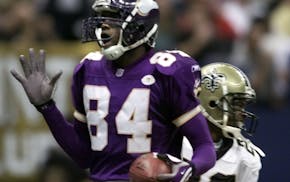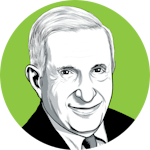May 15, 1948, was an important date in my 70-year sportswriting career. That is the date the Minneapolis Daily Times — for whom I doubled up both as a member of the circulation department delivering the newspapers to various locations, and working in the sports department for $23 every two weeks for three years — ceased publication.
Fortunately, because of a relationship I had developed with sports editor Charles Johnson of the afternoon Star Journal and the morning Tribune — going back to the days when I was a youngster selling newspapers — he hired me, despite the fact that I had never graduated from high school.
For 67 years I have been present on an almost daily basis at the Star Tribune building at 425 Portland Avenue South, which soon will no longer be the home of the newspaper. It will be torn down to make way for a public park and we will move to new headquarters downtown.
Yes, things have changed a great deal over all these years in how we covered sports. That's not to mention what we cover, too; in 1948, the Lakers were the only big-league operation in town. The Lakers won the first of five NBA titles in their first year (1947-48), beating the Rochester Royals, with George Mikan scoring 21 points.
And in those days most every member of the small 10-man staff — compared with about 40 now — was allowed to earn some extra cash by doing public relations for the different sports teams in town. That's why I was allowed to be involved with the Lakers.
For a period, I was not only a sports editor but wrote a column seven days a week, and covered all Gophers sports.
Looking back at that last edition of the Daily Times from May 15, 1948, the sports section told about how a new ballpark was going to be built on Bryn Mawr Meadows, a property eventually owned by the former New York Giants baseball team. The minor league Minneapolis Millers, which played in Nicollet Park on 31st Street and Nicollet Avenue, had a 265-foot, right field fence with a net above it, but that didn't keep sluggers such as Ted Williams from breaking many windows across the street. Then there was the writing of Dick Cullum, who in his column was reporting that Gophers football coach Bernie Bierman was expecting improvement in spring practice.
Cowles' big influence
If I was to name the greatest civic leader in my long life, and the man who transformed this area from a minor league city to a major league town, it was John Cowles, whose family came to town in 1935 bought the Minneapolis Star and eventually owned all of the newspaper. And his son John Jr. contributed, too.
One of the last things I will do Friday when the doors are shut at this building is to once again visit John Cowles' old office. If those walls could talk, they would tell the story of this great man, who has never gotten the full credit for his contributions to make this a thriving city. The walls would reveal what a big part he played in getting the Washington Senators to move here, helping this area get the Vikings, and getting Met Stadium built so we could have a place for the Vikings and Twins to play.
Met Stadium opened in 1956, and the biggest owner of bonds that paid for the structure was Cowles, and he gave the bulk of the bonds to Calvin Griffith as part of the deal to move the Senators here.
Cowles spent a lot of money trying to lure the Giants baseball team before it moved to San Francisco, and we had the Cleveland Indians set to move here in 1957, but unexpected lease problems prevented it from happening.
The Star and Tribune had its own airplane then, and Cowles allowed Johnson and myself to travel any place that was needed to lure any of the major league teams here.
If those walls could talk, they would tell you that Bill Daley, owner of the Indians, agreed to move the team in a meeting in that office. I.A. O'Shaughnessy, a local millionaire and oil man, owned stock in the Indians, and when Daley said he might want to move them to St. Paul, Cowles called editor of the Star Journal Bill Stevens to the meeting and ordered a big Sunday feature on O'Shaughnessy to make him happy.
When it came to the Vikings, Cowles sent then Chamber of Commerce President Gerald Moore and me to Chicago to try to lure the Chicago Cardinals, who were not doing well, to play in Bloomington. And when we made a deal with Cardinals President Walter Wolfner to pay him $125,000 per game to play two regular-season games here in 1959, Cowles guaranteed the check. The two games sold out and helped get the NFL here soon after.
I'll never forget when a friend — New York Giants co-owner John Mara, on a day when his team was playing the Cardinals — called me out of the press box and said, "I always said this was a Gopher town, not an NFL town, but you people proved me wrong today. You'll get a franchise."
Today, most everything Cowles did would be a conflict of interest, but even in more recent years, it wouldn't have stopped him from doing everything he could do to encourage teams like the Timberwolves and the Wild to come here.
And you can give a lot of credit for keeping both the Vikings and Twins here to Cowles Jr., who led the push to build the Metrodome, to make both franchises happy. The Dome would have never been built had Cowles Jr. not contributed a big part of the land the stadium was built on.
Back to Cowles Sr., among his great contributions was making Washington Avenue — a bums' paradise that was unsafe to walk on — a good part of downtown. Cowles gave his No. 1 assistant, one Joyce Swan, a year off from his duties at the newspaper to go to Washington, D.C., to get the funds to remodel the street and make it livable.
Yes, I might shed a few tears when I watch the wrecking crew knock down this great building. In addition to the 67 years I have worked in it, as a 12-year-old I would ride my bike to the paper when it was the Star to pick up papers to sell downtown. And while I waited for the presses to roll, I was available to Charles Johnson and the Star sports staff to do various clippings and pasting things together for them.
There's only two of us left from the good old John Cowles Sr. days; my friend Charlie Hoag, vice president of sales for the Star Tribune, is the other. We've loved to talk about old times when the old man was around. Cowles was the best, and never got the credit he deserved. It was a treat to see him walk through the newsroom on Christmas Eve with a case of whiskey on his way to drink with the printers.
Yes, this building has been very good to me. And I will miss walking in that front door after they lock it up this week.
Sid Hartman can be heard weekdays on 830-AM at 7:40, 8:40 and 9:20 a.m. and on Sundays at 9:30 a.m. shartman@startribune.com

Sid Instant Replay from 1977: Vikings' Super Bowl loss to Raiders hurt the most

Read Sid's column from 1974, when Ara Parseghian left Notre Dame

Sid instant replay: No greater hero than Twins' Morris in World Series


